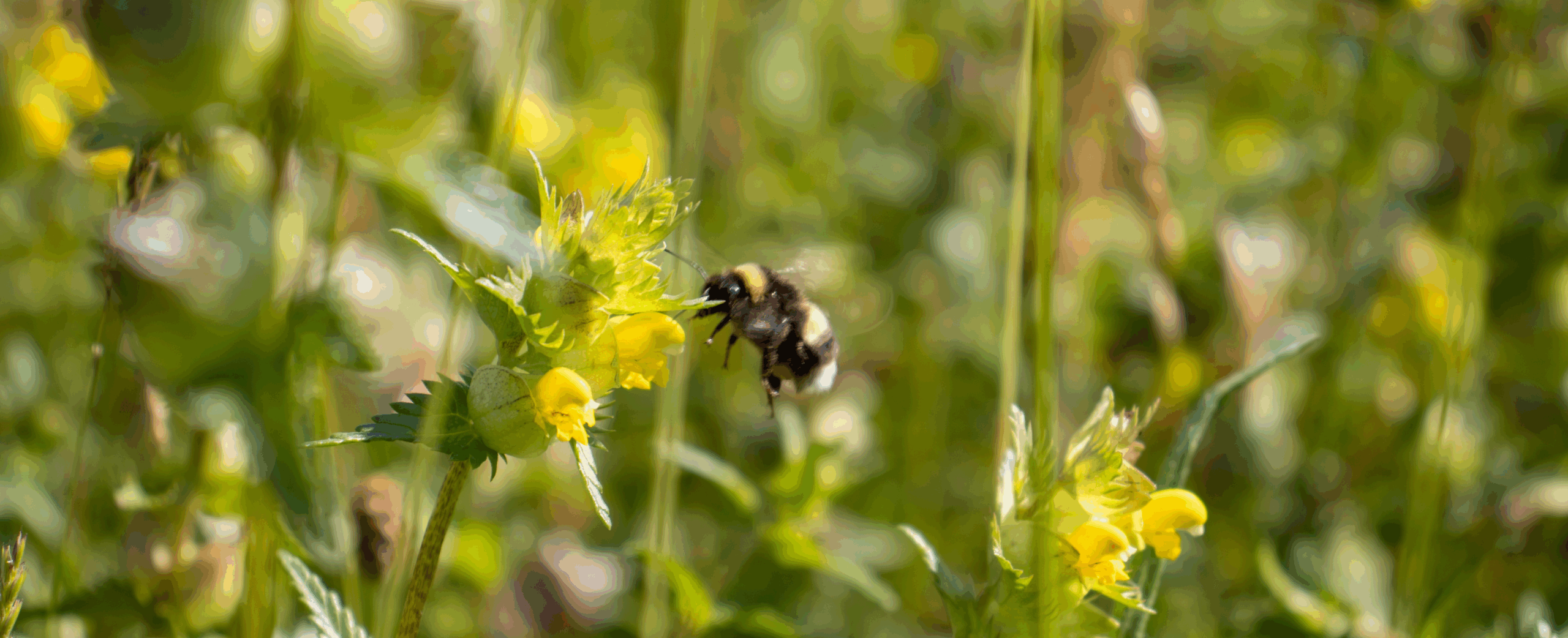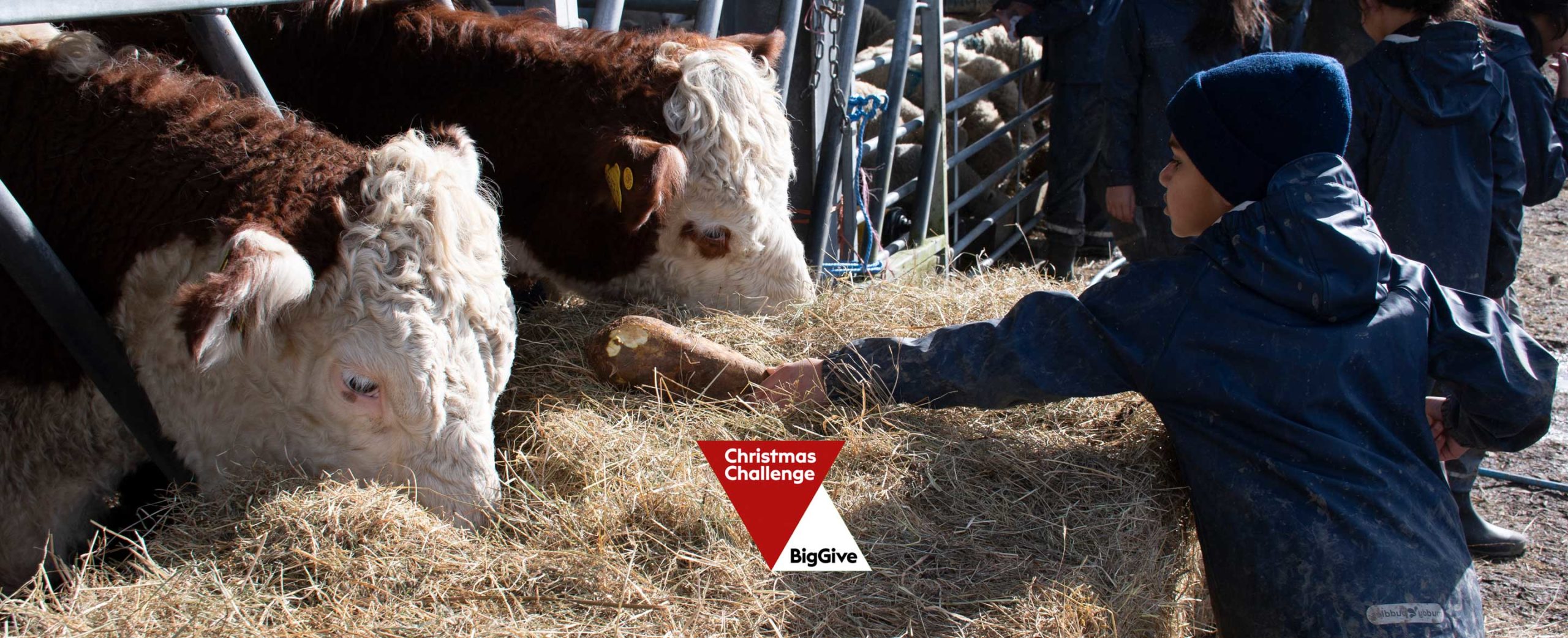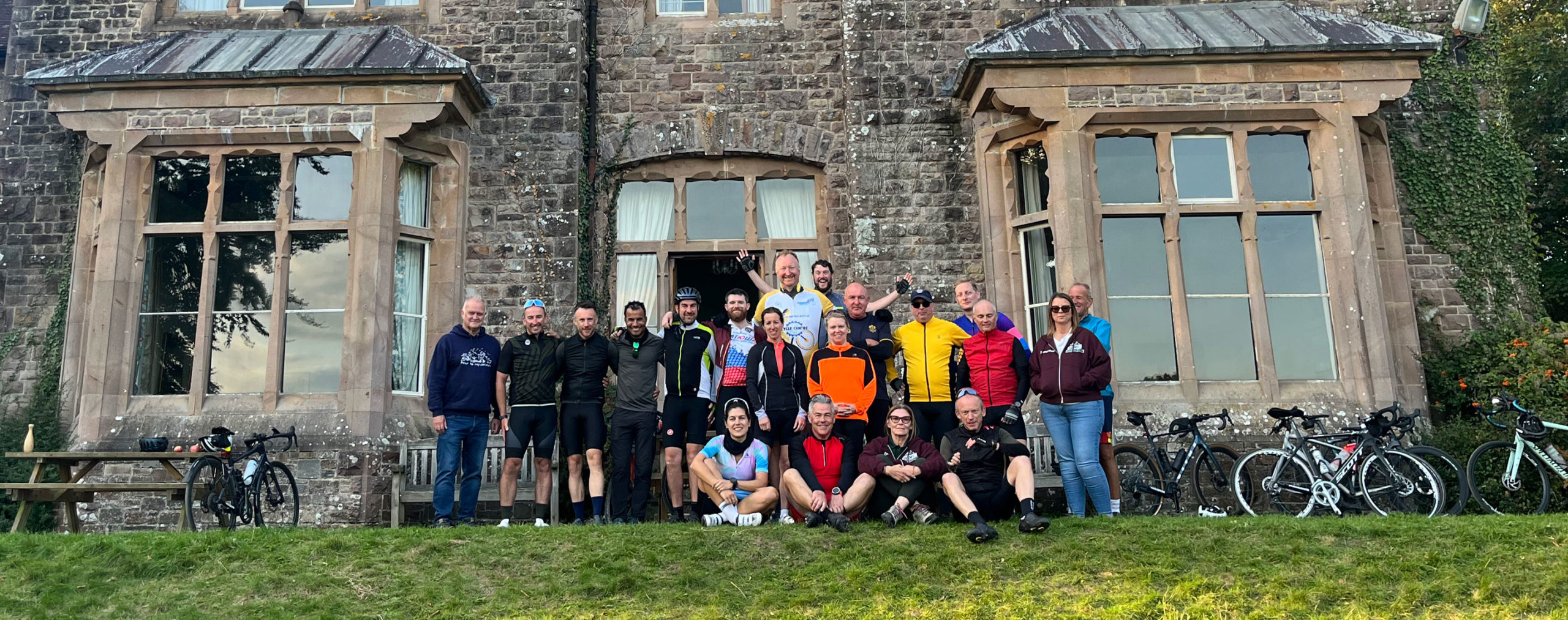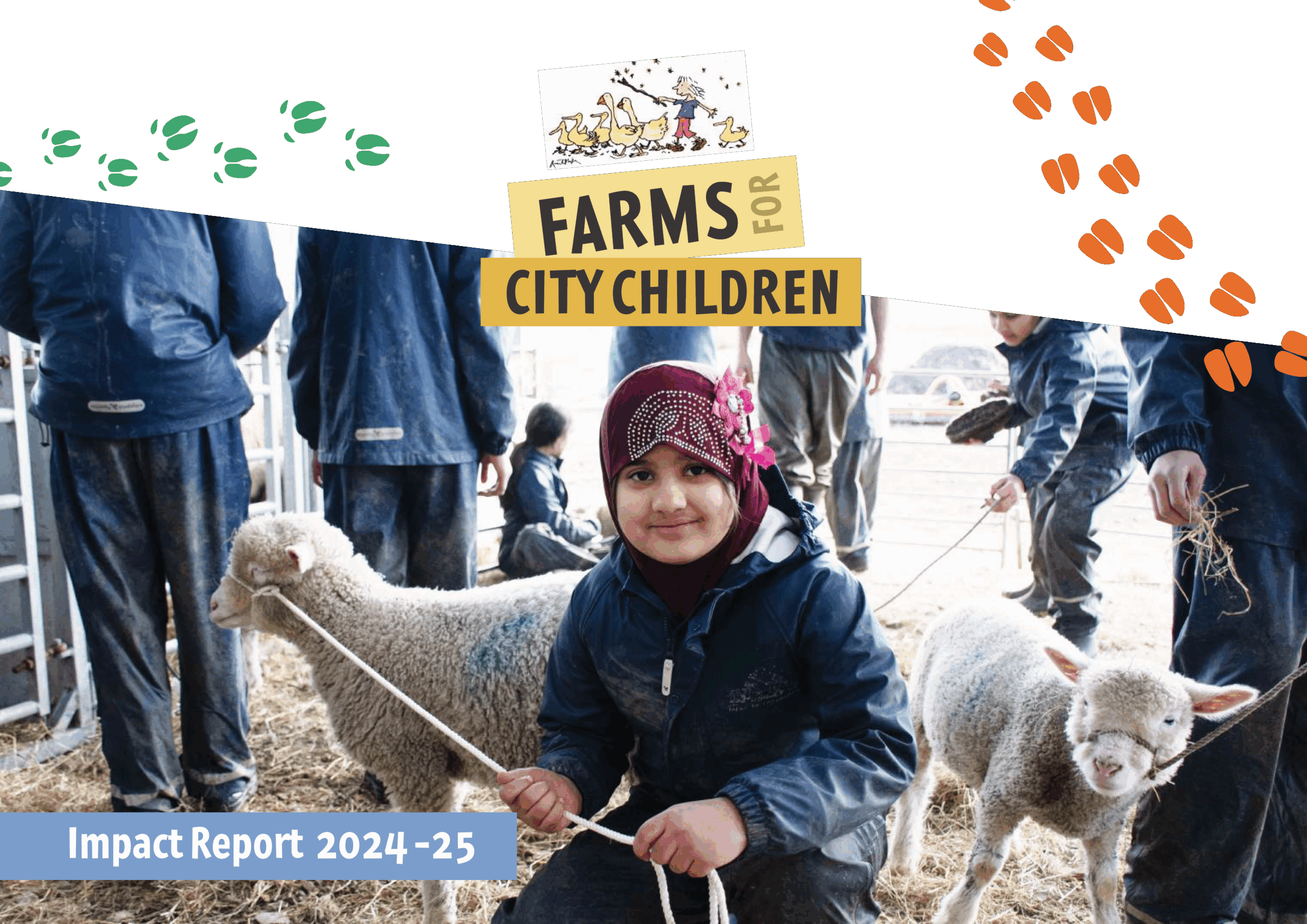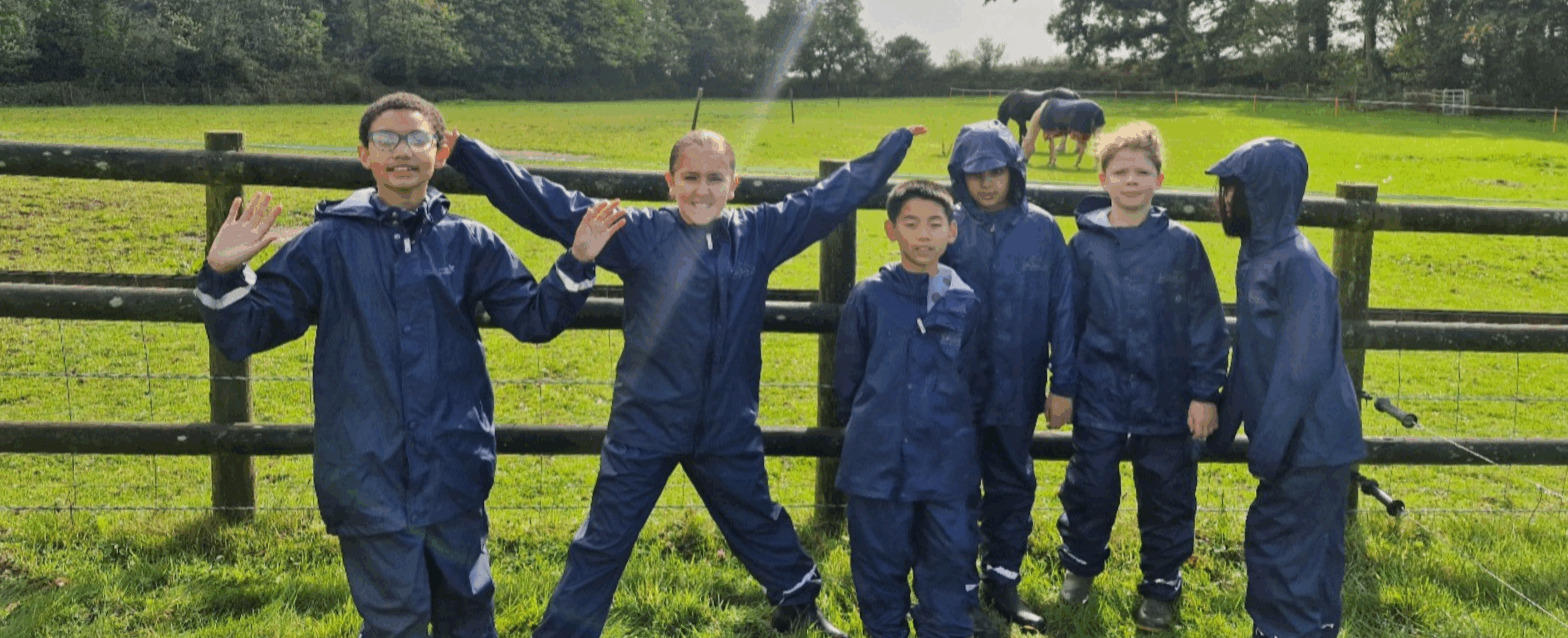By Adam Bratt – Farm Operations Manager, Nethercott House
On winter evenings at Nethercott after the children have had their tea, the cattle need to be fed. All the cattle are settled in the barn, lying in their deep straw bed, until that is, they hear the dinner bell. Well, not so much a bell, but the sound of chattering voices carrying down the lane, breaking the stillness of the night. The children are coming! The cattle gently rock themselves to a stand, arch their backs, and then saunter over to the feed barrier. They know the drill…
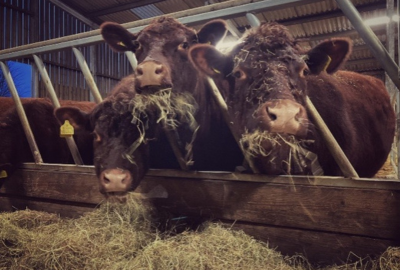
The children line up to collect big slabs of hay from bales in the feed passage and take them over to the waiting animals. There’s Gertrude, Ophelia, Willow, Hazel, Spindle, Billy the Bull and the others – our herd of beef cattle. All jostling for the best positions and tastiest mouthfuls. Children take the opportunity to ruffle the waiting heads and bury cold fingers into their warm shaggy coats. But what exactly is it that they are feeding them? Well, the story of this important winter feed stuff for our animals starts months before.
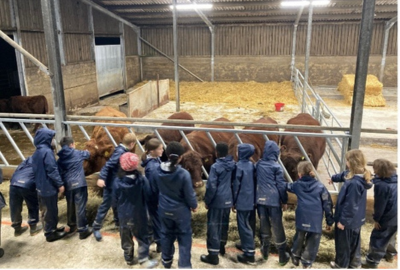
Hay is essentially dried grass and other plants. Cut in the summer when grass is abundant and dried in the sunshine (if we are lucky!). After mowing, the grass needs to be turned regularly, letting the sun and the breeze reduce the moisture and create the hay. It takes several days and for the farmers making hay, it can be a nerve-wracking time. Weather forecast Apps are checked all too often and anxious eyes are focused on the horizon for any unwelcome rain showers. Like a Test cricket match, a hay crop can be destroyed by rain. If the rain stays away and the weather favourable however, once dried, the hay is baled and can be stored in the barn until the winter months when it is most in need.
But our hay which the children are piling in front of hungry mouths, looks, feels and even smells different to only a few winters ago. This is because our hay meadow has undergone a transformation. As with many of today’s agriculturally improved grasslands, our meadow was until recently dominated by a very small number of grasses and flowering plants. Changes in farming practices have favoured cutting silage rather than hay. This often occurs earlier in the summer, before many plant species have finished flowering and set seed. Applications of fertilisers too, have resulted in a fewer dominant grasses and flowering plants being present. The statistics associated with the loss of traditional species-rich hay meadows make for sobering reading. Plantlife estimates 97% of hay meadows have been lost since the 1930s. The declines of many of the wildlife species associated with such grasslands is equally saddening; half of the UKs butterfly species (many of which rely on flower rich grasslands) are in long term decline.
There is, however, change afoot. Some farmers are recreating the hay meadows of old. Not just to help reverse declines in the wildlife species reliant on them, but to try and provide a more varied food crop for their livestock. There is much interest in the greater range of minerals sequestered by a more diverse range of plants within a meadow and the potential associated health benefits for livestock.
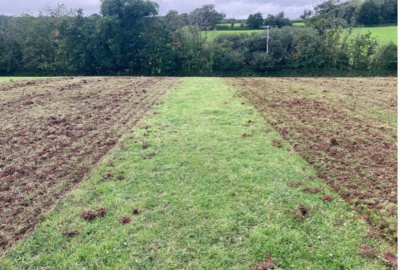
Having decided we would like to be a small part of the attempt to reverse the decline in this wildlife-rich farmed habitat, we turned to The Devon Wildlife Trust. They have the resource, connections and expertise to support farmers make a transition to more species-rich hay meadows. After some planning, the works to start the process were swift and dramatic. Our meadow was harrowed (essentially roughed up so bare earth was visible) and then green hay (undried hay from a local flower-rich meadow) mechanically blown across our field. After that, we let our sheep trample the seed which had been spread into the ground. Then waited.
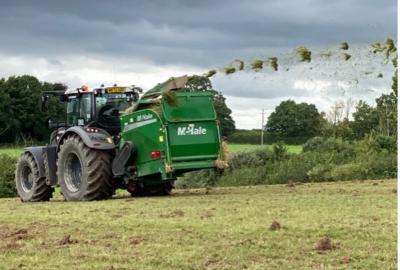
What happened next was unremarkable. The sheep trampled, they nibbled and winter set in. The dream of a flower-rich hay meadow was largely forgotten.
Then the following spring something changed. Seedlings sprung. But unfamiliar seedlings. Plants likely not seen in this field for many years. First, Yellow rattle. Then Sweet Vernal grass. Then Meadow Foxtail and Crested Dog’s-tail. Lesser Trefoil, Bird’s-foot-trefoil, Lady’s Smock, Forget-me-not, Selfheal, Ragged Robin. All these grasses and flowers which were not here before, were appearing. It continued all that first summer; and with them, bumblebees, hoverflies, moths – and butterflies! Lots and lots of butterflies. Meadow Brown and Common Blue butterflies in numbers not seen elsewhere on the farm. Rising and settling, chasing each other through the grasses and flowers. In the early evenings the House Martins, Swallows and Swifts would fly low over the field to feast on whatever insects they could snatch. The change was dramatic.
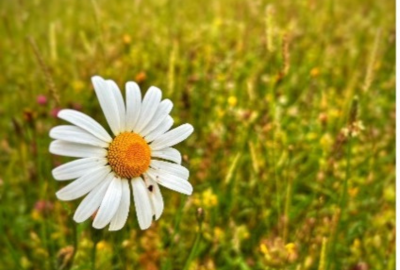
That was the drama of the meadow in summer. The rain is now beating down on the cattle barn roof. The cows, calves and bull are tucking into the hay, scooping it up on outstretched tongues and chewing it down. Feeding hay in the depths of winter helps me remember the summer past and brings hope for the summer yet to come. As the children look at all the seed heads and feel the different textures within the hay we talk of the meadow in summer and how it has changed. Of the colours of the flowers, the sights and sounds of the wildlife and the challenges of preserving the hay for winter. Of how important this meadow is for our cattle and wildlife – how we are promoting beef AND butterflies.
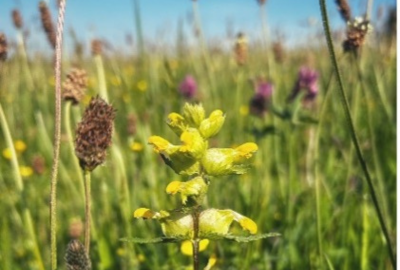
Inspired by Adam’s blog? You can find more information and helpful resources on managing meadows on the Plantlife website.

